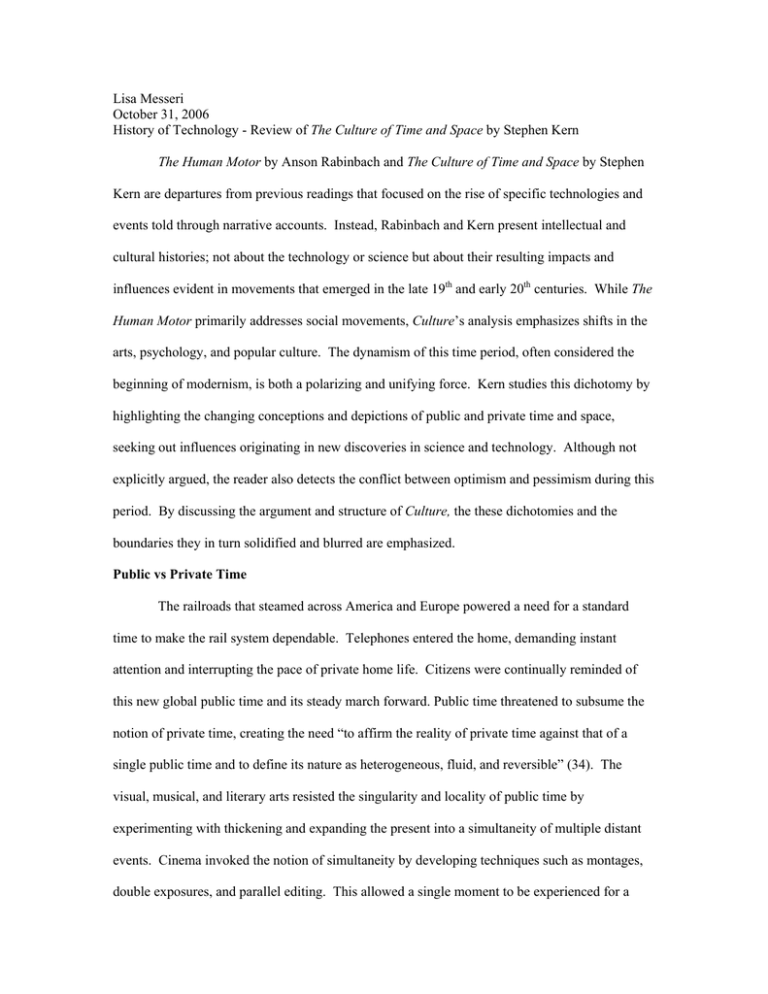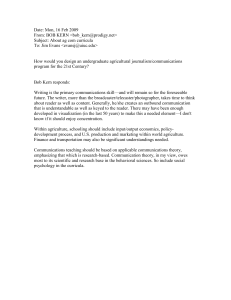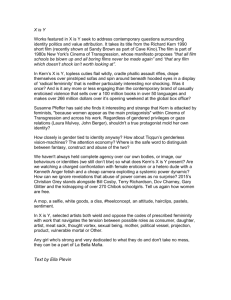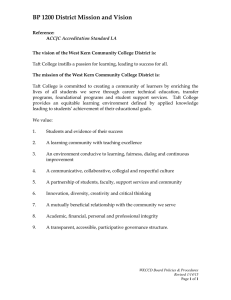Lisa Messeri October 31, 2006 The Culture of Time and Space
advertisement

Lisa Messeri October 31, 2006 History of Technology - Review of The Culture of Time and Space by Stephen Kern The Human Motor by Anson Rabinbach and The Culture of Time and Space by Stephen Kern are departures from previous readings that focused on the rise of specific technologies and events told through narrative accounts. Instead, Rabinbach and Kern present intellectual and cultural histories; not about the technology or science but about their resulting impacts and influences evident in movements that emerged in the late 19th and early 20th centuries. While The Human Motor primarily addresses social movements, Culture’s analysis emphasizes shifts in the arts, psychology, and popular culture. The dynamism of this time period, often considered the beginning of modernism, is both a polarizing and unifying force. Kern studies this dichotomy by highlighting the changing conceptions and depictions of public and private time and space, seeking out influences originating in new discoveries in science and technology. Although not explicitly argued, the reader also detects the conflict between optimism and pessimism during this period. By discussing the argument and structure of Culture, the these dichotomies and the boundaries they in turn solidified and blurred are emphasized. Public vs Private Time The railroads that steamed across America and Europe powered a need for a standard time to make the rail system dependable. Telephones entered the home, demanding instant attention and interrupting the pace of private home life. Citizens were continually reminded of this new global public time and its steady march forward. Public time threatened to subsume the notion of private time, creating the need “to affirm the reality of private time against that of a single public time and to define its nature as heterogeneous, fluid, and reversible” (34). The visual, musical, and literary arts resisted the singularity and locality of public time by experimenting with thickening and expanding the present into a simultaneity of multiple distant events. Cinema invoked the notion of simultaneity by developing techniques such as montages, double exposures, and parallel editing. This allowed a single moment to be experienced for a longer time, by multiple people in multiple places. James Joyce, inspired by cinematic montages, recreated the feel of simultaneity in Ulysses. He “improvised montage techniques to show the simultaneous activity of Dublin as a whole, not a history of the city but a slice of it out of time, spatially extended and embodying its entire past in a vast expanded present” (77). Thickening time through simultaneity and expanding the present to include elements of the past and future were two ways thinkers and artists blurred the boundaries between the past, present, and future and reaffirmed the distinction of private time in contrast to public time. Public vs Private Space Kern argues that the notion of space changed in two profound ways at the turn of the century: artists began experimenting with multiple perspectives (a spacial interpretation of simultaneity) and with “positive negative space”. When discussing the proliferation of multiple perspectives, Kern digresses from his central argument that technology and science drove the cultural revolutions. Though non-Euclidean geometries “had a great effect on mathematics and physics [they] did not generally influence thinking in other areas” (139). The revolution in space, therefore, is a product of new forms of perspective in the art world. Cezanne pioneered this technique and greatly influenced his contemporaries, including the Cubists. Kern does not give a straightforward explanation regarding the emergence of multiple perspectives, but does say “that it enabled the Cubists to transcend the temporal limitations of traditional art” (143). Positive negative space emerges directly from scientific discoveries. Kern argues that the newly important negative/empty space is inspired by the shift in molecular theory: from ‘stuff’ being composed of solid bits of matter to the atomic model that consists mostly of empty space. Therefore, empty space becomes substantive. Positive negative space influenced architects, who began to view empty space in a room as a positive element. This movement was possible because of three new technologies: electric lights, reinforced concrete, and ventilation systems. Architects began blurring the boundary between interior and exterior. Visitors to the Eiffel Tower could not tell if they were inside or outside the structure. At the same time, Frank Lloyd Wright experimented with integrating his buildings into the landscapes. Private space was beginning to merge with public space. However, Wright believed that “interior openness was only possible when the home was safely protected from outside intrusion” forcing him to consider the “proper relation between public and private spheres” in his architecture (187). Wright was playing with the boundaries between public and private while trying to preserve a boundary between the two. Despite this effort, other modernisms were invading the private home, including doorbells, telephones, and even paparazzi. Multiple perspective challenged conventional boundaries between subject and background. Positive negative space became a prominent device in many art forms, but architects in specific experimented with its affect on public and private spaces. Optimism vs Pessimism Presently, it’s usefully to bring Rabinbach back into this review. Kern gives examples of both the enthusiasm and disillusion towards technology in the cultural world. However, he never explicitly draws the conclusion that one more dichotomy, in addition to public vs private, characterizes the time period: optimisms vs pessimism. Rabinbach, however, repeatedly emphasizes this mentality. He uses thermodynamics (a science Kern only briefly touches upon) to show the simultaneous encouragement and discouragement that was palpable in Europe and America. Whereas the first law presents a picture of unity and conservation, linking everyone and everything together, the second law proclaims that the energy of the world only decreases and chaos only increases. Utopia and dystopia are placed side by side in these two scientific laws. Kern is not ignorant of this juxtaposition, however in his concluding chapters, when he discusses the first World War as a crisis of time, speed, and space, introducing optimism and pessimism as the final national crisis would have been appropriate and in line with his (several) theses. Kern does not hesitate to draw causal links from technology to culture. He readily acknowledges how science and technology both reinforced and broke down the divide between the public and the private. However, he also recognizes that there were times that culture pushed back on technology. His most prominent example is how cubism inspired the technology of camouflage in WWI. The division between the worlds of science, culture, and daily life were additional boundaries that blurred during the time period Kern inspects. Silmultaneity, multiple perspective, and positive negative space played with the relationship between the private and the public. As causal realtionships between science, culture, and daily life began to operate in both directions, the boundaries between these spheres also began to blur during the time period Kern writes about.



